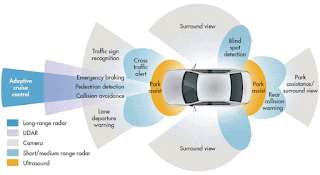It’s no secret that in just a few years, our cars will be able to take us wherever we want to while we relax. That could potentially enhance our quality of life considerably. It may sound fictional or imaginary, but the autonomous vehicle revolution is underway. The fact that self-driving cars have already started being produced is quite impressive.
Many cars today are actually semi-autonomous already. Some have features like self-parking. Completely autonomous cars are entering the scene. Tesla has already started selling autonomous solutions, and Google is planning to drop an autonomous vehicle product line on the market by 2020.
Many cars today are actually semi-autonomous already. Some have features like self-parking. Completely autonomous cars are entering the scene. Tesla has already started selling autonomous solutions, and Google is planning to drop an autonomous vehicle product line on the market by 2020.
How Do Self-Driving Cars Work?
1:IoT Sensors
There are many types of sensors available today that make autonomous cars a reality. Sensors for blind-spot monitoring, forward collision warning, radar, camera, LIDAR, and ultrasonic all work together to make navigation of a self-driving car possible.
2: IoT Connectivity
Self-driving cars use cloud computing to act upon traffic data, weather, maps, adjacent cars, and surface conditions among others. This helps them monitor their surroundings better and make informed decisions. Self-driving cars must be connected to the internet even if edge computing hardware can solve small computing tasks locally.
3: Software Algorithms
All the data the car collects needs to be analyzed to determine the best course of action. This is the main function of the control algorithms and software. This is the most complex part of the self-driving car since it has to make decisions flawlessly. A “flaw,” like in Uber’s self-driving accident, can be fatal.


No comments:
Post a Comment